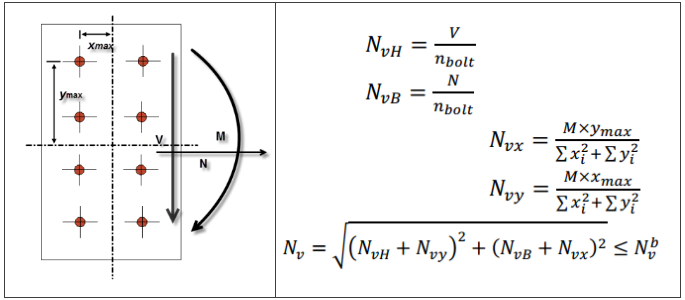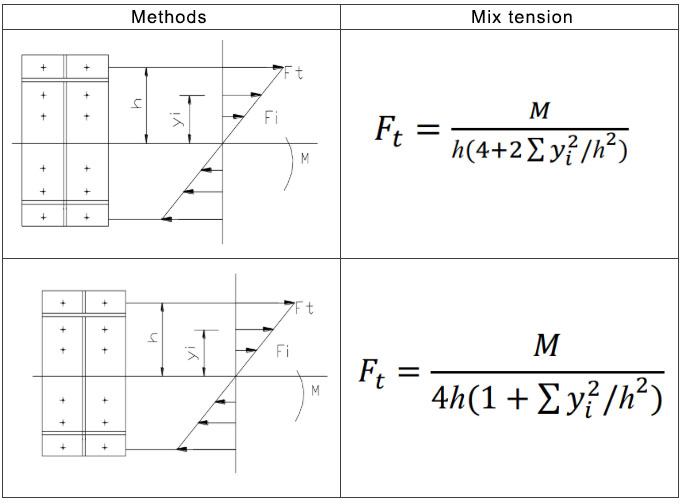Introduction and Technical Points of Full Bolt Connection of Steel Structure
Features and benefits of full bolted connections
Full-bolt connection, as the name suggests, means that the main stress-bearing parts in the connection are only bolts. Connections such as column feet, primary and secondary beams, beam-columns, supports, etc. in the steel structure can be fully bolted.


Although the full bolt connection will increase the cost, it also has many advantages.
Reduced requirements for on-site installation conditions
During bolt connection construction, workers only need to carry simple installation tools to complete. The traditional welding connection requires the use of special welding equipment and electrical equipment, and the dependence on the equipment will be stronger. The operation requirements for bolt connection will be more relaxed. For example, bolt construction can be carried out at temperatures above -10°C, while welding construction requires preheating of the connected parts when the temperature is low. Of course, for construction units, the biggest difference lies in the personnel requirements. During welding operations, construction personnel is required to have professional skills and pass the safety technology examination and hold a certificate before they can work, but there is no corresponding requirement for bolt construction personnel.
Connection quality controllable
On-site welding is a concealed project, and its quality is greatly affected by various factors, such as ambient temperature, welding position, welding level, etc. Therefore, corresponding quality inspections are required for welds with high requirements to ensure strength. The technical indicators of the bolt connection are relatively simple, and there are special tools and measures to ensure the reliability of the connection. Therefore, from the perspective of connection quality, the quality of bolts is more stable and does not require too many additional safeguards.
Environmental protection and low carbon
Welding will inevitably produce corresponding light pollution and gas pollution on site, but the bolting process will not have this problem. For the construction industry, carbon emissions during the construction phase are a key node. When a full bolt connection is adopted, all welding work can be transferred to the component factory, and carbon emissions can be reduced through technical means, which will be more controllable than on-site welding operations.
Easy to disassemble later
Compared with the concrete structure, the biggest characteristic of the steel structure is that the structure has a certain detachability. When the bolt connection is fully used, the detachability of the structure is better, and the components can be separated only by removing the connecting bolts. This characteristic can conveniently realize the functional adjustment of the local structure.
Design and technical conditions for full bolted connections
Calculation Method of Bearing Capacity of Bolt Group
Bolt groups can be divided into two types according to their stress characteristics.
One is sheared for the bolt.
First, it is assumed that the rotation center of the bolt group is at its geometric center, and then the outermost row of bolts reaches the upper limit of its shear bearing capacity as the limit. Assuming that the shear force of the remaining bolts on the inner side has a linear relationship with the distance from the center of rotation, the moments of all bolts are summed to obtain the bending capacity of the bolt group.


It can be seen from the formula that the flexural bearing capacity of the bolt group has a great relationship with its geometric arrangement size. When the geometric arrangement size increases, the flexural bearing capacity also increases accordingly.
The other is bolt tension.
First of all, the center of rotation of a bolt group should also be assumed. Generally, it can be assumed that the geometric center of the bolt group or the position where plastic hinges may occur in the connecting end plate (such as the center of the lower flange of the connecting beam). Similarly, the tensile bearing capacity of the outermost row of bolts is taken as the limit. Assuming that the tensile force of the remaining bolts on the inner side has a linear relationship with the distance from the center of rotation, the moments of all bolts are summed to obtain the bending capacity of the bolt group.


As in the case of shearing above, the flexural capacity of the bolt group also has a lot to do with the geometric arrangement. And it can be seen that if it is assumed that the neutral axis is at the geometric center, half of the bolts are actually under compression, and the actual bolts cannot be compressed, so this part of the force is borne by the end plate.
Special treatment in short beam connection
Short beam connection is a special form of full bolt connection, because a short beam needs to be installed on the connected components in advance, and then the beam and the connected components are connected by full bolt splicing of beams and beams. When designing this connection, the following details need to be paid attention to.
Equal strength assumption
In the splicing connection, the most important thing to pay attention to is the assumption of equal strength. Different from the column edge connection, the splicing connection directly adopts the bearing capacity of the component, that is, it is as strong as the component. Why not directly use the end internal force of the component? On the one hand, because the splicing positions are not at the ends, it is difficult to obtain the actual internal force; on the other hand, considering that the description of the component in the actual design is that the stiffness is continuous, if the stiffness of the splicing is weakened, it does not meet the design premise.
Because equal-strength design actually uses the component bearing capacity as the upper limit for design, the first thing to determine is that the bearing capacity here needs to use the bearing capacity of the component section; the second thing to determine is the size of the bearing capacity. Considering the requirements of connection design, the section bearing capacity only takes M and V. The beam is mainly subjected to bending, so the equal-strength internal force here can take the maximum bending moment Wf, and the corresponding shear force should be the shear force corresponding to this bending moment. Since the shear force at this time is related to the vertical load and the beam span, it is not convenient to use directly, so it can be simplified and taken as 1/2 of the shear capacity of the section. (It is too conservative to take the shear bearing capacity according to the full section, and it is not necessary).
Bending moment transfer coefficient
When the connecting plate of the flange is too long, considering the hysteresis of shear force transmission, the actual bending moment transmitted to the web will be smaller than the value assigned by calculation. Therefore, a parameter needs to be adjusted at this time to appropriately increase the bending moment borne by the flange and reduce the bending moment borne by the web. The value of this parameter is also given a suggested value of 0.4 in the seismic code training materials, and it is generally sufficient to keep this value for design.
Calculation principles and methods of ultimate bearing capacity
When the structure has seismic construction requirements, the ultimate bearing capacity of the connecting nodes of the steel structure needs to be checked. But there is one thing that needs attention, and that is, the purpose of checking the ultimate bearing capacity of the connection. The purpose of controlling the ultimate bearing capacity is to make the ultimate bearing capacity of the joints greater than the plastic bending moment of the connected beams. The ultimate effect of controlling this bearing capacity will be that the beam yields before the nodes, that is, the plastic hinge moves outward, thereby ensuring the safety of the vertical members.
Existing problems and improvement plans
The floor layout is difficult
When the full bolted connection in the form of short beams is used, since the flange needs to have a connecting plate, the problem of the unevenness of the upper flange will occur, which brings difficulties to the layout of the floor deck. So in some projects, in order to avoid this problem, the end plate connection close to the column side will be used.
Higher requirements for deepening and processing
The bolt itself is a fastener and needs to pass through at least two parts with a bolt hole in the middle. When the number of bolts is large, all bolt holes must be precisely aligned. However, in actual engineering, due to deepening or insufficient machining accuracy, there may be a misalignment of bolt holes between associated parts, causing construction difficulties. In order to quickly solve this kind of problem, on-site construction personnel often choose to forcibly deform the parts to meet the installation conditions or directly abandon the installation of some bolts, which will bring serious safety hazards.
In the end
In general, the advantages of using full bolts for steel structure connections outweigh the disadvantages. TorcStark has many years of bolt-solving experience. Especially for the connection of all bolts in steel structures. And we have developed many hydraulic tools for bolt connection, including hydraulic wrenches, hydraulic tensioners and so on.
If you need bolt solutions, welcome to contact us.


